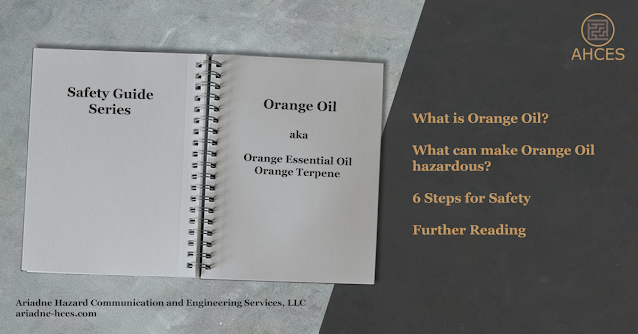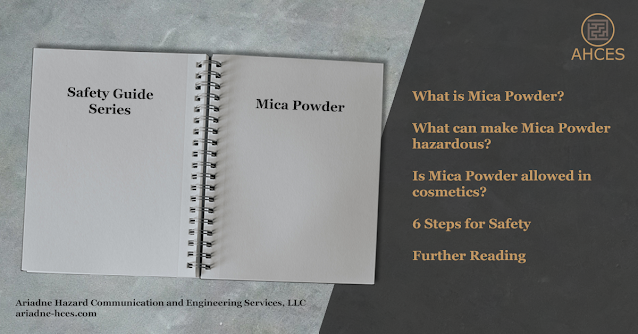Myristamine Oxide Safety Guide
What is Myristamine Oxide?
Myristamine Oxide is an amine oxide, also known as myristyl dimethylamine oxide (MDO). Myristamine Oxide has many uses as a foam stabilizer and antimicrobial agent in soaps, shampoos, and hair conditioners.
Myristamine Oxide has the CAS Number 3332-27-2.
Notable Properties of Myristamine Oxide
Myristamine Oxide is a solid at room temperature and is often sold as a white powder. It is readily soluble in water and can be found as a clear liquid solution as well.
What Makes Myristamine Oxide Hazardous?
Concentrated myristamine oxide is corrosive and an irritant. Exposure to myristamine oxide can cause severe skin burns and eye damage. Ingestion of myristamine oxide can also cause damage to the digestive system, with symptoms including nausea.
Some reports by the European Chemicals Agency (ECHA) also indicate that myristamine oxide is hazardous to the environment, causing potential long-term damage to aquatic life.
Myristamine Oxide Frequently Asked Questions
Is myristamine oxide flammable?
Myristamine oxide is an organic compound and will burn in a fire.
However, it does not meet the technical definition of flammable under OSHA physical hazard definition nor the DOT transportation definition. Therefore, it is not considered flammable for safety purposes.
Is myristamine oxide safe?
Myristamine oxide can be used safely as an ingredient in many consumer products. The most significant safety concerns come from manufacturing employees working with concentrated myristamine oxide, in large quantities, repeated, or a combination thereof. When proper safety precautions are followed, myristamine oxide can be worked with safely.
6 Steps for Safety
Step 1: Read the Warnings
When working with a product for the first time, always read all the safety documents first. This includes safety data sheets, which should be provided by the manufacturer or importer of the myristamine oxide material. There may also be an OSHA chemical label, FDA cosmetics label, or a Consumer Protection label on the packaging of the myristamine oxide product. These documents all contain important information on the hazards of the product and instructions on how to mitigate those hazards.
Different compositions in different products may cause additional hazards to be present beyond the properties of pure myristamine oxide. Be sure to familiarize yourself with the differences between separate myristamine oxide containing products.
Step 2: Prepare Your Workspace
Creating a safe workspace, sometimes referred to as engineering control, is a key component of working safely with any potentially hazardous substance.
The hazards of myristamine oxide are most prevalent when dust becomes airborne, increasing risk of corrosive irritation to the skin and eyes, so ventilation is important. Fans which would blow myristamine oxide dust around should be avoided. Dust collectors and air filters which draw in and capture any stray myristamine oxide powder are ideal.
If the myristamine oxide is in a liquid solution, it has the same corrosive and irritant hazards. Working in a space where liquid spills can be contained is important, as well as making sure the work surface cannot absorb the myristamine oxide solution. Having a spill kit available, containing absorbent barriers to contain a spill and make cleanup of hazardous liquids safer, is an important piece of equipment to have in the workspace.
Step 3: Gather Your PPE
For working with concentrated myristamine oxide, the
following PPE is recommended depending on engineering controls in place and
quantity being worked with.
- Respiratory Protection
- A dust mask meant for organic particles will protect the respiratory system from irritation.
- Eye Protection
- Safety goggles which form a protective seal around the eyes or a combination of safety glasses and a face shield can be used to prevent myristamine oxide dust or liquid splashes from reaching the eyes.
- Open safety glasses, which do not have a sealing surface, will not work in preventing dust or liquid splashes from reaching the eyes.
- Gloves
- Basic disposable gloves will prevent myristamine oxide from touching the skin on the hands and causing irritation.
- Long Sleeves
- Long sleeves will prevent myristamine oxide from touching the skin on the arms and causing irritation.
- Either a long-sleeved shirt, long-sleeved coat, or disposable sleeves will work.
- Launder any contaminated closing separately to prevent cross-contamination and inform anyone laundering the clothing of the presence of concentrated myristamine oxide so they can take any necessary precautions.
Step 4: Clear Your Workspace
Having a clear workspace is an important part of safety. Clutter can cause accidents and can hide spills.
This is also a good time to double check any engineering controls, like a dust collector, are in proper working order and no filters need to be changed out. At this time, also check that response materials, such as spill kit, are also in working order and properly stocked with supplies.
If you are working in a shared space, make sure everyone around you can also remain safe when you are working with myristamine oxide. For those working at home, this can include family members and pets.
Step 5: Do The Work
If engineering controls and PPE are used properly, working with myristamine oxide has minimal hazards.
If work cannot be completed in one sitting, be sure to properly seal any myristamine oxide containers to prevent spills or accidental release when not in use.
Step 6: Clean Up
Dust generation should be avoided when cleaning up. Either a vacuum with a filter or a damp cleaning cloth can be used to pick up spilled or stray myristamine oxide powder while preventing dust generation. Liquid spills should be absorbed with a material such as sawdust or clay particles before sweeping up.
Due to potential for environmental harm, it is best practice to ensure that no spilled myristamine oxide is released into the environment, including being washed into storm drains.
Be sure to dispose of any waste in accordance with local regulations, which can vary by State and county.
Further Reading
The National Library of Medicine has a PubChem article on Myristamine Oxide.
Sources Cited
Birnie, C. R., Malamud, D., & Schnaare, R. L. (2000). Antimicrobial evaluation of N-alkyl betaines and N-alkyl-N, N-dimethylamine oxides with variations in chain length. Antimicrobial agents and chemotherapy, 44(9), 2514–2517. https://doi.org/10.1128/AAC.44.9.2514-2517.2000
National Center for Biotechnology Information (2024). PubChem Compound Summary for CID 18739, Myristamine oxide. Retrieved July 29, 2024 from https://pubchem.ncbi.nlm.nih.gov/compound/Myristamine-oxide.
European Chemicals Agency (ECHA) (n.d.). Summary of
Classification and Labelling: 3332-27-2. C&L Inventory. Retrieved August 6,
2024, from
https://echa.europa.eu/information-on-chemicals/cl-inventory-database/-/discli/details/110405





Comments
Post a Comment